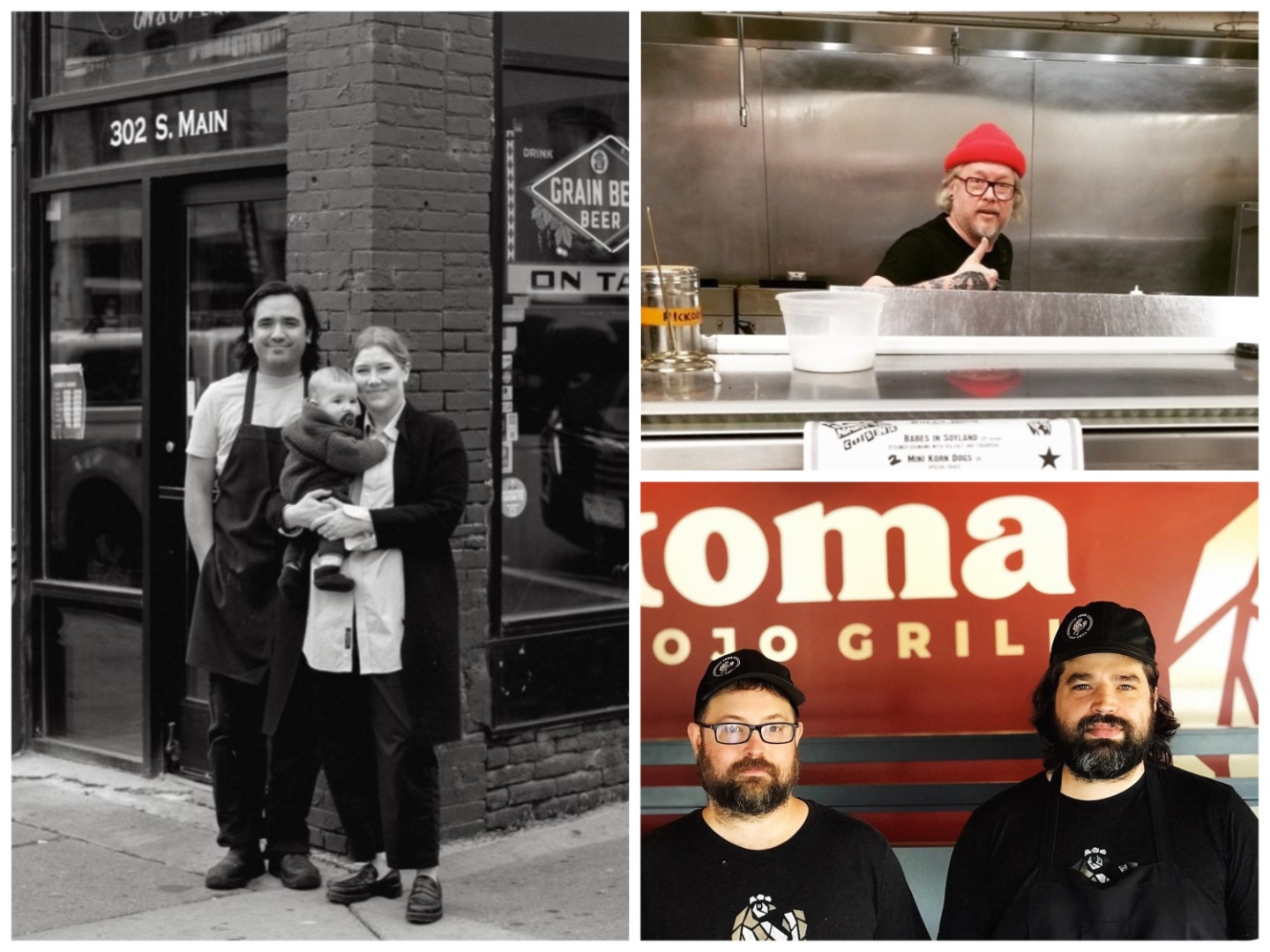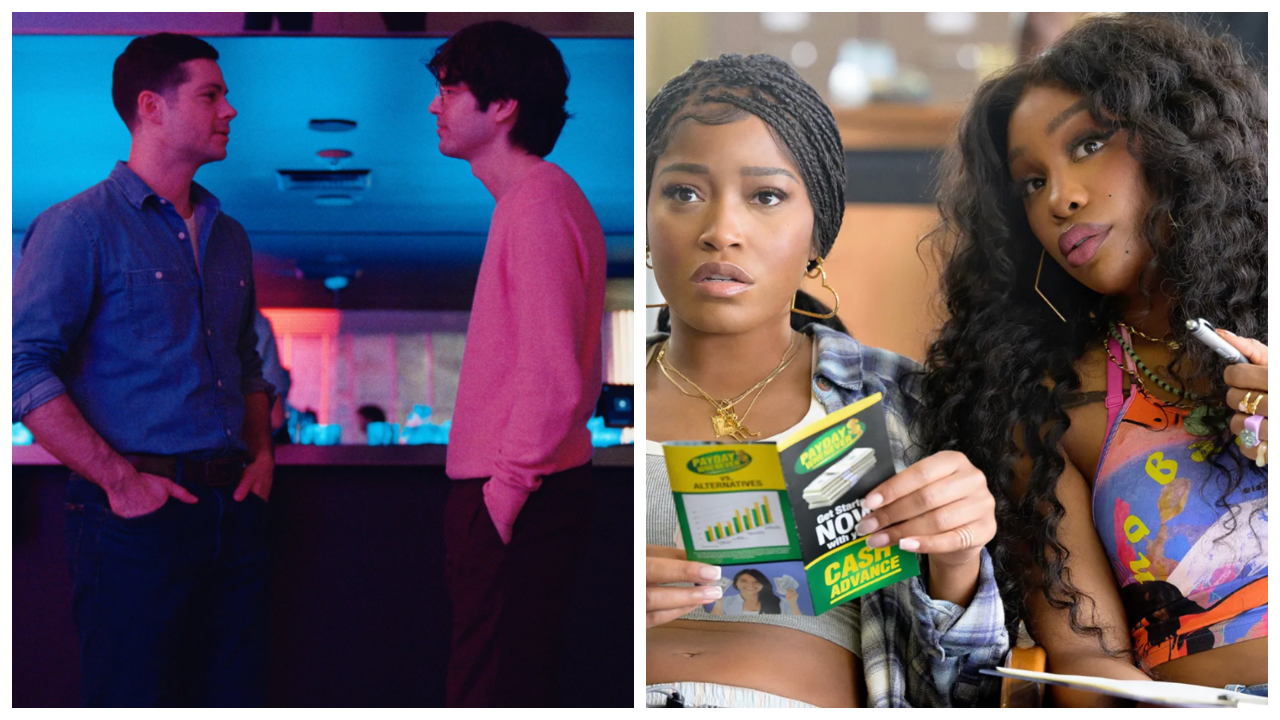The narrative is compelling enough for Hollywood: Elite chefs, so burnt out by the pressure-cooker world of fine dining that they instead apply their considerable skills to soul-satisfying comfort foods.
In 2014's Chef, Jon Favreau's character left a stifling restaurant in L.A.'s tony Brentwood neighborhood for a life of slingin' Cuban sandwiches from a food truck. (Favreau generously cast Sofía Vergara and Scarlett Johansson as his love interests.) In The Menu last year, a celebrity chef portrayed by Ralph Fiennes, apparently at the pinnacle of success, is driven to literal murder by the demands of the kitchen; he fantasizes about returning to his days in front of the flat top making smash burgers. And, of course, there’s Hulu's recent mega-hit The Bear, in which a tortured, hunky, James Beard Award-winning chef returns from a haute NYC restaurant to make Italian beef sandwiches inside his family's hole-in-the-wall Chicago shop.
Yes, Doug Flicker has seen The Bear.
“I obsessed about some tiny little details, like, ‘They wouldn't do that…’” says the veteran Twin Cities chef, defaulting to an earnest, maybe practiced-sounding capsule review. “But all in all they really did a great job of capturing the good, the bad, and the ugly of a restaurant—the writing, the acting, the food styling.”
Our question didn’t come out of the blue.
Anthony Bourdain was a noted fan of Piccolo, Flicker’s innovative small-plate establishment at 43rd & Bryant. When it closed in 2017, Minneapolis-St. Paul Magazine anointed it “one of the best restaurants in the history of the Twin Cities.” Since then, the chef with molecular gastronomy chops has been flipping burgers at his latest venture, Bull’s Horn Food & Drink, perhaps the best dive bar in Minneapolis.
So, outside of the familial reckonings and profound meditations on loss, does the six-time James Beard finalist see himself in The Bear?
“Oh, for sure. It’s kind of hard to miss,” he admits with a laugh. “The fine dining to making sandwiches… I couldn't help but notice some, sometimes uncomfortable, connections.”
That journey, as you may have anticipated from this headline, has been traveled by at least a trio of local chefs. Ahead of The Bear’s new season, which premieres June 22, get to know their winding paths through the food industry. Because, in the news biz, three is a trend and no pop culture time-peg should go unexploited.
From Hollywood to Stillwater
Adam To always felt one step removed from the restaurant industry. Growing up in Apple Valley, he watched his immigrant dad launch Tea for Two, one of Minnesota’s first exurban Vietnamese restaurants, in Lindstrom. To helped out in the kitchen as far back as he can remember, though he pursued another passion—music—before professionally picking up his chef’s knife. He met his eventual partner, local musician Caroline Smith, while gigging in bands post-high school.
“In the back of my mind, I always knew: You could always cook, man,” To remembers. “If it doesn’t work out as a rock star, you could always cook.”
That’s the direction he chose, working in Minneapolis restaurants like Black Bird Cafe, 112 Eatery, Brasa, and Sea Change. After a brief stint cooking in Pittsburgh, To relocated to L.A. with a list of three dream spots he hoped to work at. At the top of the list: Trois Mec, the French tasting-menu restaurant helmed by Michelin star-rated chef Ludo Lefebvre. When it opened in 2013, Trois Mec was named “the city’s hottest dining ticket” by Eater L.A., while the late, great food critic Jonathan Gold raved of the 28-seater, “You don't come to eat anything specific here. You come to eat Lefebvre's food.” Gold reasoned that the $75 five-course meal is a bargain when you consider parallels in Paris and New York.
“Lefebvre worked for culinary living legends, and brought that highly focused, deep understanding to what we did,” says To, who cooked there from 2016 until it closed, ultimately forever, when the pandemic hit. “It’s an intense, high-pressure environment. It was the experience of a lifetime, for better or worse. There were days I wanted to quit, but it was incredible.”
The economic effects of COVID-19 proved especially tough for To and Smith. Both of their industries more or less shut down, and To reports they had “about six weeks” worth of funds squirreled away as they sheltered in place in their one-bedroom Hollywood apartment.
So they moved back to Minnesota, where To landed an executive chef job at the St. Louis Park’s Minneapolis Golf Club and Smith gave birth to their first baby, Marty. (Smith, who performs as Your Smith, recently returned to live shows for the first time since becoming a mother.) To says he appreciated the steady work of feeding suburban golf families, but eventually decided, “It seems like we’re gonna be here awhile, and if we’re gonna be here I gotta do my own thing.”
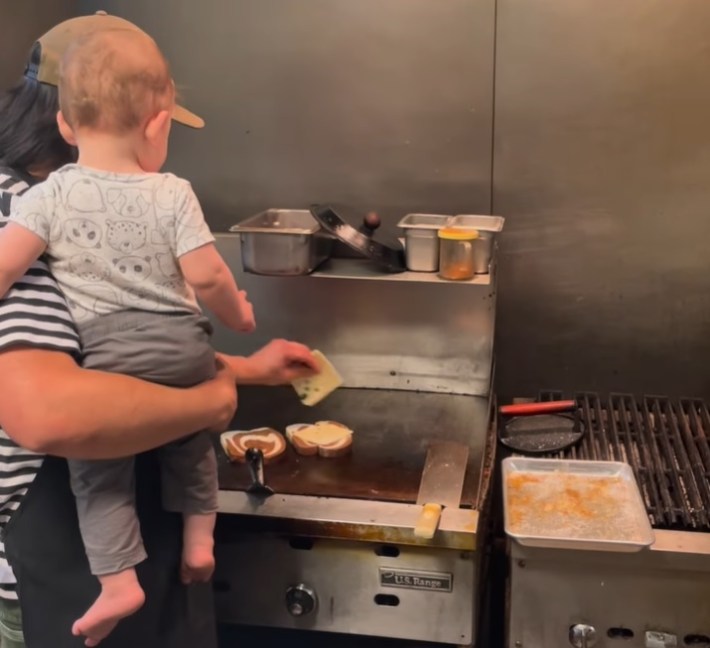
To sketched out food and business ideas at Spyhouse Coffee for weeks, game planning his next move. He considered various bistro concepts. He never considered the bar biz. Enter Whitey’s Saloon, the 20-year drinking establishment housed inside the historic Stillwater barroom at 302 Main St. S.
“I know it takes a lot of time and hours to run a highly focused food establishment, and I was like: ‘Ya know, we have a baby… Whitey’s is for sale…’” To says. “And the light bulb went off.”
To and Smith now live above that space, which they’ve reimagined as Howard’s Bar while preserving the historic building’s small-town aesthetic. The presence of pull tabs should tell you everything you need to know. You’ll recognize everything on the cost-conscious menu, the owner/chef assures us, name-checking wings, burgers, smoked in-house steelhead trout dip, lasagna featuring fresh pasta, hand-trimmed ribeyes, and even some “curveballs'' like a pork schnitzel with fingerling potato salad. The crux of the bar food at Howard’s? “Straightforward recipes that are executed as well as we possibly can.”
“I’ve never worked in a bar in my life, and here I am owning one,” To says. “I like this secondary role, where I hit you with this bonus: great food.”
For Tuesday’s soft opening, To commissioned a party bus to pick up 40 industry friends and drive ‘em to downtown Stillwater. The ribbon-cutting ceremony with the Chamber of Commerce is scheduled for today. “There’s no going back now,” he chuckled over the phone yesterday morning.
Building the Chain
Mike Knox was working in the maintenance department of a local technical college when he heard about plans for Tilia, chef Steven Brown’s sophisticated Linden Hills bistro. A few years earlier, in 2009, Knox had dipped his toe in the industry by bussing brunch tables at Cafe Maude, where he “fell in love” with the rhythms of the food and drink biz. He got hired as a bartender a couple months before Tilia opened. What came next even surprised Brown, Knox remembers.
“It was nuts,” he says. “It exploded, hour-long waits on a Tuesday.”
While certainly higher-end, Tilia offers diners options, Knox explains. You could opt for the $34 Atlantic salmon with shallot soubise, snap peas, and spring onion Fresno relish paired alongside an $18 glass of primitivo, sure. But you can also grab $15 burgers or tacos, wash ‘em down with a pint, and get out the door for $25.
Over eight years Knox worked his way up to GM of Tilia, a role that demanded 12-hour days. He was inspired working with “the best young chefs in town,” including his future business partner Paul Backer, but a few years ago the burnout resulted in his “retirement” from Tilia. Knox worked an hourly job at his buddy’s brewery, Falling Knife, while plotting his next move.
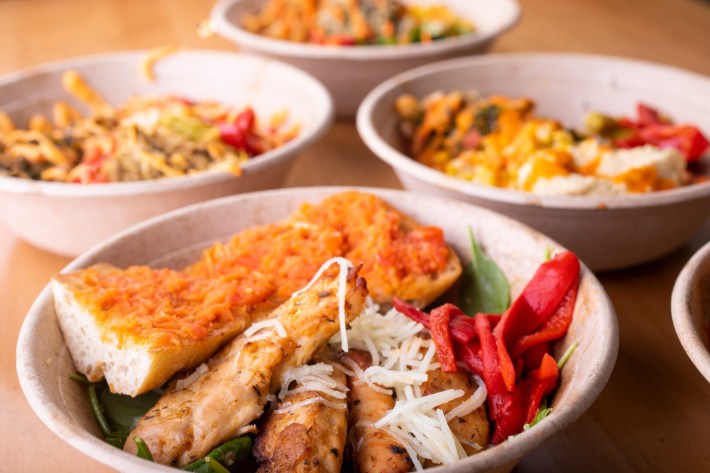
Around 2020 Knox reconnected with Backer, who had graduated from Tilia and worked kitchens at St. Genevieve and Surly, among others. Backer had hatched a plan for a fast-casual roast chicken concept called Toma Mojo, and he wanted Knox onboard. The appeal was obvious: constant menu, no fussy bar program, lower stakes, and reasonable hours. And Knox knew his partner would ace the Mediterranean-inspired menu of fresh and affordable hummus plates, chicken sandwiches, bowls, cucumber tomato salads, beers, and sangrias.
Launching in August 2021, right as the Omicron wave yet again crushed local restaurants, made for an inauspicious start, Knox remembers. And, compared to the meatier margins of fine dining, his team soon discovered you need to sell a lot of $11 chicken sandwiches to stay afloat.
But Knox says business is strong and growing at their Minnetonka flagship, and Toma Mojo will soon become a chain, as a second location in Richfield is set to open soon. Backer personally trains cooks who require no previous restaurant experience—they just have to eventually nail the fundamentals required for roasting chicken and slathering on house-made herb aioli and green Mojo sauce.
“Paul was enamored with what was going on in 2011, with the foams and the tweezer tongs,” Knox says of his Toma Mojo partner. “I think he got tired, and he learned that complexity doesn’t always equal flavor. When you’re drawn into food, it’s usually not haute cuisine that hooks you. It’s a hamburger, a slice of pizza, something you got when you’re a kid.”
Doug’s Burgers
Growing up in early ‘80s Rochester, Minnesota, Doug Flicker was a product of his racially and culturally homogeneous hometown. The city was populated by monied Mayo Clinic doctors or IBM technicians, he says, and there wasn’t “a whole lot” in between them and the service class. Flicker, the son of a plumber, says he grew into a teenage stoner “with no ambitions in life.”
Then his sister started dating the chef at a new Italian restaurant, and everything changed. “I saw a guy in a white jacket and I’m like: ‘Fuck, I’ll get laid and I’ll be able to feed myself,’” Flicker remembers. So he drove two hours north to study cooking at Saint Paul College. In 1987, the ambitious young cook was hired by D'Amico Cucina, the white-tablecloth downtown Minneapolis restaurant that helped fortify the growing D’Amico & Partners empire.
“It was life-changing. I felt like I found my people—alternative music people, gay people,” says Flicker, who became D'Amico Cucina’s head chef at just 24. “And, for the first time in my life, I found something I was good at and people responded to it. I lapped it up like a Pavlovian dog.”
The Twin Cities culinary scene was unevolved back then. Flicker remembers exotic items like olive oil and parmesan had to be shipped in from the coasts. In 1997 he’d helped push things in exciting new directions with his first restaurant, Auriga, where he’d create “artistic, free-flow cooking” based on Polaroid snapshots of his guests. Think jazz, but with peekytoe crab emulsion instead of saxophones.
After Auriga closed, Flicker achieved staggering critical praise for his new, boundary-pushing south Minneapolis restaurant Piccolo. Scrambled eggs with pickled pig’s feet was the only dish that endured inside the tiny small-plate chef’s playground; Flicker says the work was all-consuming, and that he’d flip the menu every six weeks. There was zero work-life balance from 2010 to 2017.
“The critics loved it, but there were a lot of internet trolls or whatever that talked about how they had to get a burger after because they were still hungry,” he says of Piccolo, noting that those detractors could have simply ordered more food. “My attention span resets about seven years. As I change, what I want to cook changes. We did everything we wanted to do.”
Post-Piccolo, Flicker worked for a spell at Walker Art Center's Esker Grove, and poured more energy into his Lake Nokomis snack shack, Sandcastle. Since 2012, however, right before Sandcastle opened, the chef had been eyeballing the 3.2 beer dive known as Sunrise Inn. Initial offers were even extended and rejected. By 2017 the Sunrise owners were “much more receptive,” Flicker says, and he managed to close on the then-seedy tavern early that year.
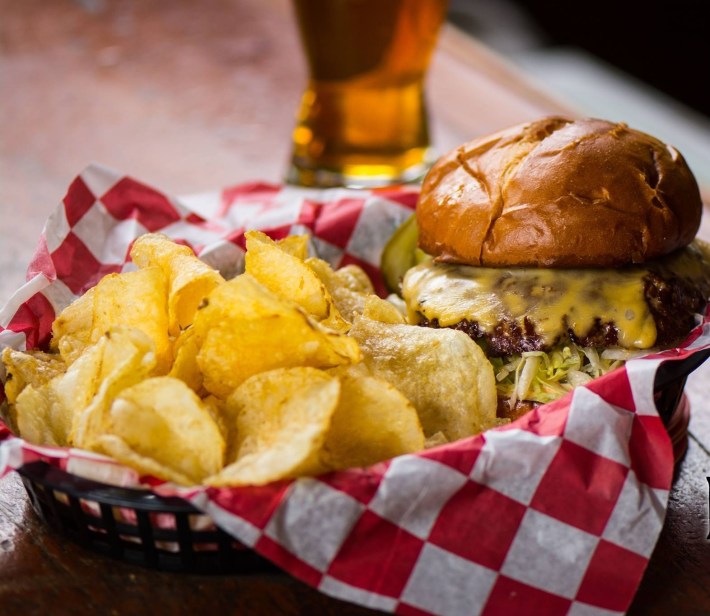
That Halloween, Flicker and his wife, Amy Greeley, opened Bull’s Horn. It was, and is, dive-bar perfection. The vintage wood paneling and just enough grime remain, while the true gross-out spots—like the bathrooms and kitchen—were overhauled. The authentic spirit of the South Side barroom from 1935 persisted. It just happens to have an elite menu now.
“Cooking is cooking,” Flicker says. “It really shouldn’t matter what the product is—there’s a correct way to do it, an incorrect way, and there’s always a way to make it better. We take that approach with our food, even if it’s just a burger or chicken wings. We try to make it perfect, to elevate the flavors, every time.”
While the hours are a vast improvement from his Piccolo days, finally allowing for vacations, fly fishing, and family time, Flicker finds ways to obsess over his menu of elevated bar food. During our conversation, he spent over a minute explaining his tinkering with the melting point of the house-made American cheese that tops their burgers. The Bull’s Horn staff is three times bigger than at his previous venture, Flicker says, and most of the money to pay ‘em comes from beer and booze sales. He adds that the atmosphere is “much healthier” than at Piccolo, “which required constant sacrifice and attention; everything had to be perfect.”
When reminded of his seven-year itch to start over, Flicker grins mischievously. Bull’s Horn is about to celebrate its sixth anniversary, he observes aloud. But don’t worry: The best dive bar in town isn’t going anywhere. “It’s as rewarding as the days of Piccolo, when I’d lock myself in the kitchen,” Flicker says.
“Bull’s Horn is obviously a keeper,” he continues. “I don’t see a difference between Piccolo and Bull’s Horn, it’s just more sustainable. We have kids that come here with their parents and get kids’ trays, and in 10 years? They’ll get a beer here. Burgers and chicken wings are what I grew up eating, what I honestly know. I had to learn about foie gras and caviar. I know what a cheeseburger should taste like.”
